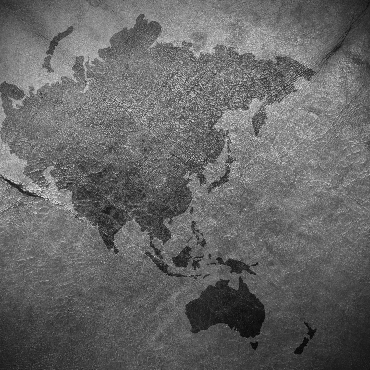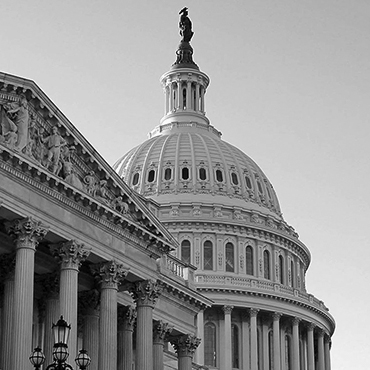WITH AUKUS, CANBERRA SERVES NOTICE TO BEIJING
On September 15th, the governments of Australia, the United Kingdom, and the United States jointly announced the formation of a trilateral partnership, abbreviated as "AUKUS." The immediate purpose of AUKUS is to procure a conventionally-armed, nuclear-powered submarine fleet for Canberra by the year 2040. Australia's move from its original plan of a French-designed diesel-electric submarine fleet to a nuclear-powered one was made possible with the blessing and support of Washington and London, and marks only the second time the United States has agreed to share its nuclear-powered submarine technology with another country. According to Australian Prime Minister Scott Morrison, the U.S. and UK will provide extensive technical support, but the submarine fleet will be built in southern Australia. In addition to carrying ballistic missiles, early reports indicate the fleet will also be armed with Tomahawk cruise missiles, which would open up targeting options on the Chinese mainland. Short of conflict, the unique capabilities of nuclear-powered submarines would allow Australia to more easily access and patrol the South China Sea. (Financial Times, September 19, 2021)
AS CHINA INCREASES AIR SORTIES, TAIWAN SIGNALS AUSTRALIA AND AMERICA
During the first four days of October, the People's Liberation Army Air Force (PLAAF) flew a record-breaking 149 sorties into Taiwan's air defense zone. China's military adopted this tactic recently to test Taiwan's readiness, drain the island's resources, and gather intelligence. In response, Taipei sent multiple signals - one to Canberra, and another to Washington. While remarking on the air incursions, Taiwan's Foreign Minister, Joseph Wu, singled out Australia for possible security and intelligence exchanges. Meanwhile, its Defense Minister, Chiu Kuo-cheng, warned that Beijing could take Taiwan with minimal losses by 2025: a pointed message aimed at Washington, which has committed to preserving the island's independence. Running in parallel, and perhaps in connection to, these developments were leaks in the American press about a year-long U.S. Marine Corps deployment in Taiwan for training purposes. (ABC News, October 4, 2021; Wall Street Journal, October 6, 2021; Wall Street Journal, October 7, 2021)
BRI FRUSTRATION FESTERS IN BEIJING'S BACKYARD
The weaknesses of China's Belt & Road Initiative (BRI) are well-documented: corrupt kickbacks for politicians, local workers getting sidelined for Chinese labor, and state-driven projects that disproportionately benefit elites — not to mention crushing debt. These problems are present in several BRI-partner economies, but they are beginning to fester in politically surprising places. At considerable risk to their personal safety, researchers and lawyers in Laos are beginning to express discontent with the Belt & Road model. Displaced families and unpaid workers are a reality in many BRI partner countries, but public frustration from Lao sources, even if shared on background, reveals that China's most loyal partners are not exempt from the corrosive effects of Beijing's development model. To make matters worse, a recent report revealed that the BRI debts Vientiane owes Beijing vastly exceed public records, and are roughly equivalent to 35% of its GDP. (Radio Free Asia, September 8, 2021; AidData at William & Mary, September 29, 2021)
VIETNAM ANGLES TO OFFSET CHINA'S INFLUENCE OVER LAOS AND CAMBODIA
The aforementioned developments in Laos are not going unnoticed in Vietnam. Hanoi is watching the deepening economic dependence of Laos and Cambodia on China with increasing concern - and is seeking to act as a counterweight. In late September, Vietnam's Communist Party chief, Nguyen Phu Trong, held trilateral talks with his Lao and Cambodian counterparts. It represented the latest in a series of efforts from officials in Hanoi to reconstitute Vietnam's historical influence over the two nations - influence that, thanks to China's increasing economic heft, has waned in recent years. Of particular concern is China's ownership of critical infrastructure in Laos, and Beijing-Vientiane hydropower projects along the Mekong River that have curtailed key Vietnamese industries. Moreover, Cambodia's emerging defense partnership with China could expose Vietnam's southern flank to the People's Liberation Army (PLA). Accordingly, Vietnamese officials have noticeably boosted trade with both Laos and Cambodia this year. (Asia Times, September 27, 2021)
NORTH KOREA SHOWS GROWING SIGNS OF STRAINS IN PUBLIC HEALTH, ECONOMY
Even as it continues to conduct its missile tests, Pyongyang is softening its policies in other areas, particularly with the World Health Organization (WHO) and relations toward neighboring South Korea. After refusing international assistance for months and sealing his country's border, North Korean leader Kim Jong-un has now begun accepting WHO medical supplies - a sign of the growing strain that COVID-19 is placing on the "Hermit Kingdom." Similarly, border closures last year led to severe food shortages, which Kim acknowledged as a "grim situation" in recent remarks. In a related gambit, Pyongyang reopened its communication hotline with Seoul in early October. (Newsweek, October 11, 2021; BBC, October 4, 2021)
Want these sent to your inbox?
Subscribe
Indo-Pacific Monitor No. 21
Related Categories:
Human Rights and Humanitarian Issues; International Economics and Trade; Australia; China; North Korea; South Africa; Southeast Asia; Taiwan

